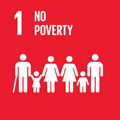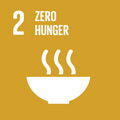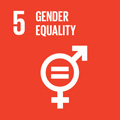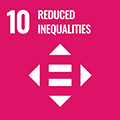- Docente: Valerio Melandri
- Credits: 6
- SSD: SECS-P/07
- Language: Italian
- Teaching Mode: Traditional lectures
- Campus: Forli
-
Corso:
Second cycle degree programme (LM) in
Management for Social Economy (cod. 8843)
Also valid for Second cycle degree programme (LM) in Management for Social Economy (cod. 6802)
-
from Nov 11, 2025 to Dec 16, 2025
Learning outcomes
The goal of the course is to provide students with the basic knowledge and the main tools of fundraising for nonprofit organizations. At the end of the course, students will be able to: - understand and apply fundraising strategies, sources, tools, methodologies, and management; - analyze and use different techniques to ensure the economic, organizational, and strategic sustainability of nonprofit organizations; - understand and apply the concept of fundraising ethics.
Course contents
The Laboratory on Fundraising Techniques is a key course in the Master’s Degree in Social Economy (University of Bologna – Forlì Campus). It bridges theory and practice of fundraising, preparing students to operate in today’s Italian fundraising landscape, which is constantly evolving toward more sophisticated and innovative models. Under the guidance of Prof. Valerio Melandri, an international expert in fundraising, students will explore cutting-edge methods and tools to financially support social causes. The course has a strong professional focus: through a hands-on approach and interaction with real cases, students will put principles and techniques into practice, developing skills required in the Third Sector and the nonprofit field. By the end, each participant will have contributed to the development of a real annual fundraising plan for an organization—an experience that synthesizes acquired knowledge and prepares them to face concrete fundraising challenges in Italy.
Introduction and Course Objectives:
The course provides a solid foundation of fundraising principles and techniques. The learning objectives include:
understanding the strategic role of fundraising for the sustainability of nonprofit organizations and social enterprises;designing an annual fundraising plan;becoming familiar with operational tools (from direct mail to digital fundraising, from corporate partnerships to donor care);developing donor analysis skills and creativity in campaign design.Its professionalizing value lies in learning by doing: the guided creation of a Fundraising Plan allows students to fully apply what they have learned, combining theory and practice in a complete strategic project. In particular, the annual plan developed by students will be an operational document guiding a real organization in its fundraising for an entire year, covering all essential components (mission, case for support, strategies for different donor types, budget, timeline, performance indicators, etc.). This experience represents a true professional simulation, where students collaborate with local organizations and face real challenges of the nonprofit sector. Expected outcomes go beyond theoretical knowledge and include soft skills such as teamwork, effective communication (through presentations), and problem-solving in fundraising.Lesson 1 – Introduction to Fundraising and Core Principles:
Presentation of the course and overview of fundraising. Key definitions are introduced (what fundraising is and why it is essential for the sustainability of social causes). Concepts of the case for support (how to identify the right cause/project to present to donors) are explained, as well as the importance of choosing the appropriate fundraising channels and target audience. The three pillars of fundraising (core principles behind effective fundraising) are also illustrated.Exercise example: analysis of mission statements from selected nonprofits and discussion of what makes them effective or improvable.Assignment: students must select a real nonprofit organization to work with, contacting it to collect initial data on its financial situation and mission (e.g., revenue composition and amount of donations received).Tools: mission evaluation forms, charts/pie diagrams for analyzing the organization’s funding sources.Expected outcomes: understanding fundraising fundamentals and starting work on the real case (selection of the organization and collection of basic information).
Lesson 2 – The annual fund and regular donors
This lesson deepens the concept of the annual fundraising campaign as the strategic foundation on which an organization’s “fundraising journey” begins. Regular donors—often called “sleeping giants” due to their untapped potential—are analyzed. The lesson emphasizes the importance of donor retention and recurring giving programs in ensuring stable and predictable revenue.
Exercise: based on the partner organization’s data, students identify donor types and evaluate the role of regular donors (e.g., share of recurring gifts). They discuss how to segment the donor database and strengthen loyalty.
Tools: donor database analysis (or provided dataset simulation), guided discussion on loyalty metrics (renewal rate, average annual gift, etc.).
Expected outcomes: ability to outline the elements of an annual fundraising plan, understanding strategies to encourage recurring giving, and first ideas on annual fundraising goals for the chosen organization.
Second week:
Lesson 3 – Direct Mail: raising funds through letters
Focus on traditional direct mail techniques: how to write an effective fundraising letter, from message structure to the call to action, and how direct mail integrates into a multichannel strategy. Real examples of successful campaigns are presented.
Exercise: in groups, students review a real fundraising letter from a nonprofit, identify strengths and weaknesses, then draft a short letter tailored to their organization’s donors.
Tools: letter templates, persuasive copywriting guidelines, A/B testing platforms (introduced).
Expected outcomes: ability to apply direct marketing principles, understanding how personalization and storytelling influence response rates; production of a draft fundraising letter relevant to the chosen case.
Lecturer: Sebastiano Moneta.
Lesson 4 – Digital fundraising and social media
This lesson (with guest professionals such as Elisa Castellucci and Carlotta Petti from the Festival del Fundraising) explores digital fundraising strategies: social media campaigns, email marketing, crowdfunding, and using websites for donations. Emphasis is placed on digital presence and innovative tools such as peer-to-peer fundraising platforms.
Exercise: design of a simple one-month social campaign plan: each group prepares a calendar with Facebook/Instagram posts, emails, and a crowdfunding page for their nonprofit.
Tools: overview of tools like Facebook Ads Manager (promotion), Google Analytics (traffic monitoring), Canva (creating visuals).
Expected outcomes: ability to design a digital mini-campaign, familiarity with online tools, awareness of key metrics (conversion rate, cost per click, etc.), integrating the annual plan with a digital component.
Lecturers: Elisa Castellucci and Carlotta Petti.
Third week:
Lesson 5 – Corporate fundraising and partnerships with companies
Focus on corporate fundraising: how to engage companies in fundraising through partnerships, sponsorships, and CSR (Corporate Social Responsibility) projects. With a guest testimonial (e.g., Giovanna Bonora, UNHCR), approaches to companies and proposal design are illustrated.
Exercise: role-play meeting with a potential corporate sponsor. Each group prepares a 5-minute pitch presenting their nonprofit’s project to a company’s board (acted by fellow students), highlighting mutual benefits.
Tools: effective presentation slides, corporate pitch outline, optional Google Slides collaboration.
Expected outcomes: development of negotiation and B2B communication skills, understanding what companies seek in nonprofit partnerships, production of a corporate proposal for integration in the plan.
Lecturer: Federica Valenza.
Lesson 6 – Major donors and bequests
This session covers two crucial fundraising areas: major donor strategies and legacy giving. With guest speaker Stefano Malfatti (Fundraising Director, Istituto Serafico di Assisi), students learn how to identify, cultivate, and engage high-capacity donors, as well as how to ethically and transparently communicate legacy giving opportunities. The importance of building a donor pyramid to visualize donor levels and upgrade strategies, along with long-term donor care, is highlighted.
Exercises:
-
Create the donor pyramid of the chosen nonprofit based on real/hypothetical data.
-
Identify 2–3 potential major donors and outline personalized approaches.
-
Draft a legacy campaign scheme with key messages and sample materials (e.g., brochure or letter).
Tools: CRM or spreadsheet for donor segmentation, wealth research and one-to-one communication guidelines, sample legacy materials and ethical/legal guidelines, Google Docs for collaborative drafting.
Expected outcomes: ability to design major donor strategies, understanding legacy planning techniques, developing a data-driven approach to donor management, integration of major donor and long-term sustainability objectives into the annual plan.
Lecturer: Stefano Malfatti.
Fourth week:
Lessons 7 and 8 – Fundraising Day
Students will attend the Fundraising Day, a major free online event featuring practical fundraising cases presented by professionals. This will be an opportunity to learn from real-world experiences and explore strategies and tools immediately applicable to fundraising practice. The sessions will include listening, reflection, and guided discussion to connect external testimonies with the course content.
Expected outcomes: broaden knowledge of innovative practices, gain insights from experienced fundraisers, and collect ideas to integrate into the annual fundraising plan.
Lesson 9 – Giving voice to the social cause
Workshop with Eric Strollo on expressive and effective communication, focusing on how to present and convey social causes in an engaging way. This activity will also prepare students for their final presentations, strengthening public speaking and storytelling skills.
Lecturer: Eric Strollo.
Fifth week:
Lesson 10 and 11 – Presentation of plans
In the final two lessons, students put into practice the skills acquired by presenting the Annual Fundraising Plan they have developed in groups. In these presentation sessions, each group presents its plan to the class, which simulates the organization’s Board of Directors. Each presentation (about 10 minutes) aims to convince the “Board” – played by classmates from the non-presenting groups – of the soundness and credibility of the proposed strategies. This is followed by a Q&A of about 10 minutes in which the “Board” asks questions, requests clarifications, and offers critical observations.
Tools: PowerPoint presentation (maximum 15 slides, or another digital tool of choice) to support the talk; possible use of Zoom or pre-recorded videos if any student/guest participates remotely.Expected outcomes: improvement of professional oral communication skills, ability to synthesize and manage time in formal presentation settings, ability to defend and argue strategic choices in front of a knowledgeable audience. Teamwork skills are also evaluated, evident in the cohesion of the presentation and in the ability of multiple group members to respond to questions. Active participation as “Board”/audience is mandatory and contributes to the final grade, fostering students’ critical thinking towards others’ plans.Readings/Bibliography
Required text:
Melandri, Valerio (2023). Fare Fundraising, Maggioli Editore.
This manual provides the theoretical framework and practical cases on fundraising. Students are required to study most chapters of the book (some secondary chapters, indicated by the professor, are excluded from the exam, but full reading is still recommended). Before each lesson, students are expected to read the chapters corresponding to the topics that will be covered.
Additional teaching materials:
In addition to the manual, the professor will provide extracts from articles, case studies, and handouts useful for exploring specific topics of each module. In particular, the handout “Annual Fundraising Plan 2025” will be distributed: a detailed syllabus that serves as a guide for the main course assignment (containing the recommended structure of the annual plan and suggestions for preparing the presentation).
During the course, multimedia resources may also be indicated: for example, videos of successful fundraising campaigns, webinars (e.g., extracts from the Festival del Fundraising), and podcasts from sector experts. These multimedia resources, together with lecture slides and any case histories discussed in class, will be made available on the course’s online platform (e.g., shared Google Drive repository or institutional e-learning platform).
Recommended bibliography:
The professor suggests reading some in-depth and updated resources:
-
Reports and studies on the nonprofit sector and giving: World Giving Index, Italia Non Profit – Annual Report on Giving, etc., useful for understanding sector trends.
-
Scientific or professional articles: a selection of articles (including in English) on fundraising best practices, digital innovation, and fundraising ethics, provided during lessons or indicated in the extended bibliography.
These additional materials are not required for the exam, but they represent added value for building broader and more informed competence. Students are encouraged to consult them especially if they intend to pursue a career in fundraising or if their course project presents specific challenges that require extra references.
Teaching methods
Melandri, Valerio (2023). Fare Fundraising, Maggioli Editore.
This manual provides the theoretical framework and practical cases on fundraising. Attending students, by virtue of the work done in class, are required to study most of the chapters of the book (some chapters will be excluded from the exam, to be indicated exclusively during class, although full reading is still recommended). Before each lesson, students are expected to read the chapters corresponding to the topics that will be covered.
A key element of the method is the flipped classroom: as mentioned, preliminary study of the materials (textbook chapters, articles) is required before each class. For example, students come to class already familiar with concepts such as the “three pillars of fundraising” or the EROI model, so they can immediately focus on applying them to their organization’s real case.
Teamwork is at the heart of the Lab. From the very first lessons, students are divided into teams (maximum 2–3 people), and each group selects or is assigned a real nonprofit organization to collaborate with. This may be a small local association or a larger institution, but in all cases with authentic fundraising goals and challenges. Each group appoints a team leader who maintains contact with the organization and with the teaching assistant supporting the course. This role distribution mirrors the professional dynamics of a fundraising team.
Throughout the semester, groups progressively develop their annual fundraising plan through intermediate steps (assignments) corresponding to structured exercises. In class, time is devoted to brainstorming. Often, at the end of lessons, one or more groups informally present the progress of their work, receiving immediate comments and suggestions from the professor and peers.
A distinctive feature is the integration of real cases and external testimonies. Lessons 4–8 host professional fundraisers from leading organizations (Festival del Fundraising, UNHCR, AIRC, Istituto Serafico, etc.), who bring their practical experience into the classroom. These contributions not only provide specialist knowledge but also serve as inspiration and role models for students. For example, the digital fundraising session with sector professionals allows students to see real online campaigns; the corporate fundraising testimony offers a concrete perspective on how a company evaluates partnership proposals. This constant link to the professional world reinforces the pragmatic approach of the course.
The professor conducts guided discussions, role plays (such as the Board of Directors simulation during final presentations), and analysis of Italian and international case studies. The atmosphere is that of an open workshop, where every student is encouraged to contribute ideas, share personal volunteering or nonprofit experiences, and learn constructively from mistakes.
In summary, the Lab’s teaching method combines: interactive lessons, preliminary self-study (flipped classroom), teamwork on real projects, ongoing support from the professor-coach, exchanges with professionals, and final public presentations. This blend ensures that students not only acquire knowledge but also develop practical skills and a proactive mindset—essential to becoming successful fundraisers in an ever-evolving context.
Assessment methods
The assessment of learning takes place through various tests that reflect the theoretical–practical nature of the course. The exam is structured into three parts. Below are the procedures for attending and non-attending students, the evaluation criteria, and the timing, including the requirements for honors (cum laude).
Exam structure (attending students):1st Part – Portfolio of assignments (approx. 1/3 of the grade):
This consists of a set of 4 group assignments completed during the course. Each assignment is a short written work covering a specific topic/skill:
-
Initial analysis and mission: evaluation of the chosen organization’s financial situation and critical analysis of its mission statement. Students produce charts and comments on the composition of the organization’s income (share of fundraising vs. other sources, breakdown of donations by donor category, etc.) and verify whether the mission aligns with the criteria studied in class, suggesting possible improvements.
-
Case for support – EROI Model: elaboration of the annual case for support using the EROI Model (Emotion–Reason–Pride–Identity). Students complete the EROI table for their nonprofit, defining the key messages to communicate to donors (emotional appeal, rational data, pride/belonging, organizational values).
-
Economic planning – Gift range table: construction of the gift range table to cover the annual fundraising need. This involves creating a gift chart showing how many and what types of donations (by amount and donor type) are needed to meet the annual target, applying course principles (proportion of large/medium/small gifts, prospect-to-donor ratios, breakdown by target and tool). A commentary on the strategic implications is also required (e.g., dependency on a few major donors, need to broaden the base, etc.).
-
Donor base expansion strategies: drafting of a short operational plan to expand the organization’s donor base. Students identify new potential supporter profiles and describe targeted actions to attract them, highlighting differences from current donors. They must indicate which audience segments are not yet reached but may have high potential, and which strategies should be introduced or improved (e.g., peer-to-peer campaigns, events, referral programs). In formulating these strategies, students must apply the CIA rule (Connection, Interest, Ability) to assess the affinity and capacity of new prospects.
The Portfolio thus documents progressive learning and the ability to translate theory into practice. It will be submitted as a single written file (PDF containing all four assignments) by a set deadline at the end of the course (mid-December, indicative).
Evaluation criteria: quality of analysis (completeness and accuracy of data, depth of critical review), creativity and relevance of proposed solutions, clarity of expression, and care in writing. Each assignment will be graded, and overall the Portfolio counts for about one-third of the final grade. Note: punctual submission is mandatory; late or non-compliant work will not be accepted.
2nd Part – Presentation of the Fundraising Plan (approx. 1/3 of the grade):
This is the practical and oral group test, corresponding to the presentations delivered during Lessons 10 and 11. Each team presents its annual fundraising plan, simulating a meeting with the nonprofit’s Board of Directors.
The presentation is evaluated on synthesis and persuasive effectiveness: students must demonstrate their ability to convince an informed audience of the quality of the proposed plan. Criteria include structure and clarity of delivery, appropriate use of visual aids, teamwork (distribution of speaking roles), and ability to answer questions effectively.
Active participation as audience members also matters: attending students must take part in both presentation sessions and ask relevant questions, which contributes to the final evaluation.
Additional evaluation criteria: originality and feasibility of plan strategies, internal consistency of the plan (alignment between objectives, strategies, and budget), professionalism of the presentation (timing, language, Q&A management). After the presentations, each group receives qualitative feedback from the professor, who also considers the team’s ability to address critical comments in the evaluation.
3rd Part – Individual oral exam (approx. 1/3 of the grade):
A final oral examination during the scheduled exam session, aimed at verifying theoretical knowledge and the ability to connect it with the practical experience developed. Questions may concern concepts from the textbook (Fare Fundraising), topics covered in class (e.g., “Explain the three pillars of fundraising and how you applied them in your plan” or “Which KPIs did you include to monitor your campaign and why”), and a critical discussion of the annual plan developed.
Evaluation criteria: mastery of fundraising terminology and principles, ability to think critically (connecting theory and project, evaluating alternatives), clarity of expression. The oral exam is individual: each student, even within the same group, must demonstrate full understanding of the entire work.
The absence of classroom participation is compensated by a more detailed analysis of the textbook. Non-attending students are NOT required to submit the annual fundraising plan or assignments. They will be assessed exclusively on the textbook Fare Fundraising, which is fully required for them.
Grading rubrics and criteria for honors (cum laude):Each part of the exam is graded on a 30-point scale. To pass, students must obtain at least a passing grade in all three components. The final grade is the weighted average of the three parts (unless significant discrepancies require discussion at the grade recording).
Honors (30 e lode) will be awarded to students achieving excellent performance in all areas: flawless Portfolio (rigorous analysis and highly original proposals), an annual plan judged professional and innovative, outstanding presentation and full command of theoretical topics during the oral exam.
In particular, to earn honors, the student must demonstrate significant personal and creative contributions to the project, as well as a depth of understanding sufficient to make interdisciplinary connections and propose solutions beyond the requirements.
Active participation and a proactive attitude throughout the Lab (e.g., interventions during lessons, constructive contributions in group work, punctual submission of assignments) will be considered positively in determining the final grade, especially in borderline cases.
Teaching tools
To support the practical and collaborative approach of the Lab, several digital tools will be used to facilitate both lessons and independent work. Their conscious use is an integral part of the skills to be acquired, since in professional fundraising it is now essential to master dedicated technologies and software. Below are the main tools and their use cases:
Google Workspace (Drive, Docs, Sheets, Slides): this will be the main platform for collaborative work. Each group will have a shared folder on Drive to collect materials and drafts. Google Docs will be used for collaborative writing of assignments and the annual plan, allowing multiple people to work on the same file in real time, with the professor/tutor adding direct comments. Google Sheets can be used for donor data analysis (e.g., creating tables and charts for Assignment #1 or the gift range table in Assignment #3). Google Slides will be the preferred tool for preparing the final presentation slides: thanks to file sharing, group members can build the outline and visual content together, ensuring a consistent style.
CRM and donor databases: an important part of training will involve using donor management tools. The course will illustrate the basic principles of a fundraising CRM, showing interfaces and core functions of widely used platforms (Salesforce NonProfit, Raiser’s Edge NXT, or open-source solutions). Students will practice by simulating donor record entry and updates, segmenting a small database, and extracting useful reports (donations by range, last gift, donation frequency, etc.).
Canva and simplified graphic design tools: visual communication is central to fundraising; for this reason, students will be encouraged to use Canva, an intuitive platform for creating quality graphic materials even without design skills. It can be used to design direct mail postcards, social media posts, infographics, or slides for the final presentation. Example:during the digital fundraising lesson, groups will design an Instagram Story flyer to promote their cause, then share and discuss it in class. The best works will be presented and reviewed collectively at the end of the session. This practical exercise strengthens sensitivity to the visual aspects of campaigns.
Videoconferencing platforms (Zoom): while the course prioritizes in-person classes to maximize interaction, Zoom will be used as a support tool in various contexts: meetings with international guests, blended learning for students unable to attend in person, and online office hours with the professor and tutor.
In addition to the above, the course uses institutional resources provided by the University: the e-learning platform (Virtuale / Moodle) as the official repository for materials and communications, and internal communication tools (student mailing lists, course forum) for updates and coordination. However, the emphasis on tools such as Google Workspace and Trello reflects the intention of familiarizing students with platforms widely used in collaborative work environments.
In summary, the digital infrastructure supporting the Fundraising Techniques Lab is designed to create a collaborative technological ecosystem: from co-creating content (Google Docs), to creative communication (Canva), to data analysis (CRM/Excel), and synchronous remote communication (Zoom). The integration of these tools into the learning path enriches the student experience, preparing them to face real-world scenarios where digital and teamwork are the norm.
Links to further information
https://www.valeriomelandri.it/
Office hours
See the website of Valerio Melandri
SDGs




This teaching activity contributes to the achievement of the Sustainable Development Goals of the UN 2030 Agenda.
